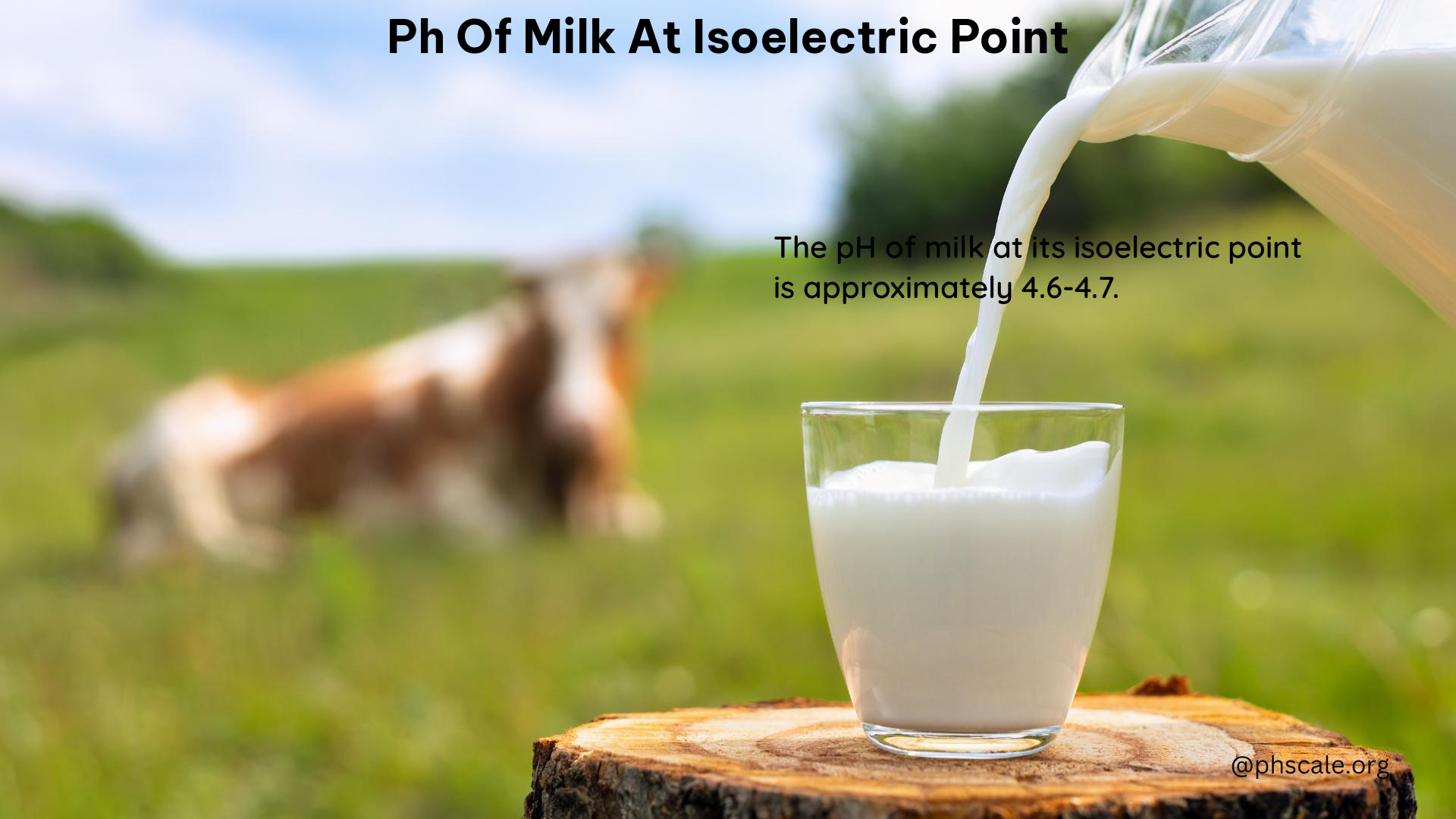The pH of milk at its isoelectric point is a crucial aspect of understanding milk proteins and their behavior. This article delves into the intricacies of the isoelectric point of milk proteins, the effects of pH on these proteins, and the practical implications for DIY users.
Isoelectric Point of Milk Proteins
The isoelectric point (pI) of milk proteins varies depending on the type of protein. For bovine milk caseins, the pI ranges from pH 4.9 to 6.5 for αs, β-, and κ-caseins, and from 6.7 to 8.0 for γ-components. This range is significant because it affects the solubility and interactions of these proteins.
Effects of pH on Milk Proteins

When milk becomes spoiled, microorganisms produce acids, lowering the pH of the milk. This decrease in pH causes the precipitation or coagulation of milk proteins, particularly casein, which is a common example of protein isolation due to pH changes. At a pH close to the isoelectric point, casein micelles aggregate, leading to larger particles and changes in their surface structure.
Shifts in Isoelectric Point During Evolution
Research has shown that milk proteins have undergone significant changes in their isoelectric points during evolution. For example, κ-casein, lactadherin, and muc1 have undergone the highest changes in pI. These changes are not solely due to adaptations to different mammalian digestive systems but rather to changes in other protein functions, such as bioactive peptide releases in the gut.
Practical Implications for DIY Users
For DIY users, understanding the pH of milk at its isoelectric point is crucial for maintaining milk quality and preventing spoilage. Here are some practical tips:
- Monitor pH levels: Regularly check the pH of milk to ensure it remains within a safe range (around pH 6.6).
- Maintain proper storage: Store milk at a consistent refrigerator temperature (around 4°C) to slow down bacterial growth and acid production.
- Avoid contamination: Handle milk and equipment hygienically to prevent bacterial contamination, which can lower the pH and cause spoilage.
Contaminants and Chemicals to Be Aware Of
Some common contaminants and chemicals that can affect the pH of milk include:
- Bacterial acids: Produced by microorganisms during spoilage, these acids lower the pH of milk.
- Calcium and phosphate: Changes in these ions can affect the size and structure of casein micelles.
- Acidic or alkaline substances: Intentional or accidental additions of acidic or alkaline substances can alter the pH of milk.
Solutions and Alternatives
To deal with these contaminants and chemicals, consider the following solutions and alternatives:
- Regular cleaning and sanitizing: Ensure all equipment and storage containers are thoroughly cleaned and sanitized to prevent bacterial growth.
- pH adjustment: If necessary, adjust the pH of milk using food-grade acids or bases, but be cautious not to over- or under-adjust.
- Alternative milk sources: If you are concerned about the pH of cow’s milk, consider alternative milk sources like almond, soy, or oat milk, which have different pH profiles.
By understanding the pH of milk at its isoelectric point, DIY users can better maintain the quality and safety of their milk products, ensuring a delicious and nutritious experience.
References
- ScienceDirect: “Isoelectric Focusing of Bovine Milk Caseins”
- University of Maryland: “Isoelectric Precipitation”
- NCBI: “Shift in the Isoelectric-Point of Milk Proteins as a Consequence of Adaptive Divergence Between the Milks of Mammalian Species”
